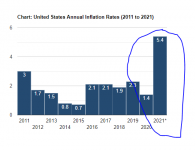President Joe Biden’s job approval rating is on the downslope. As of Friday morning, he was at 45.8 percent approval and 48.5 percent disapproval — from a high of 54 percent approval, 41 percent disapproval at the end of his first 100 days.
There is a laundry list of reasons for this. Not only is the United States still in the grip of a pandemic, but also the delta variant of the coronavirus has led to record infections and deaths in Florida, Texas, and other states with relatively low vaccination rates (and where officials have taken a stand against mitigation efforts). At the same time that delta took hold, Biden also faced a huge backlash from the news media and his partisan opponents over the US withdrawal from Afghanistan, which began in chaotic fashion with the collapse of the Afghan national army, the subsequent advance of the Taliban and, of course, the suicide bombing in Kabul that killed 13 US service members.
The administration quickly adjusted to the chaos, though, and by the time the last American soldiers left Monday, the US military and its allies had evacuated around 1,24,000 people, including thousands of US citizens and tens of thousands of Afghan nationals. And as seen in the latest jobs report from the Bureau of Labor Statistics, the economy is growing at a slower rate than it did at the start of the summer.
Taken together, you have a pretty good explanation for why Biden is doing much worse with the public than he was at the beginning of the year.
With that said, there’s another dynamic at work, one that should guide our expectations for how popular Biden is and how popular he could become. Put simply, we’re still quite polarised.
One of the most consistent findings from the past 20 years of public opinion research is that each new president is more divisive than the last. George W. Bush was more divisive than Bill Clinton; Barack Obama was more divisive than Bush; Donald Trump was more divisive than Obama; and Biden may well end up more divisive than Trump, at least in terms of approval rating by partisan affiliation. Some of this reflects circumstances, some of it reflects the individuals, but most of it is a function of partisan and ideological polarization. Modern presidents have a high floor for public opinion but a low ceiling.
This is a major change from the 1970s and 1980s, when the public was less polarised and numbers could swing from the low 30s (even the 20s) to the high 60s and beyond. At the peak of his popularity, in the wake of the Persian Gulf War of 1991, George HW Bush had a job approval rating of 89 percent, including 82 percent among Democrats and 88 percent among independents. Those numbers are just not possible in today’s environment.
Biden’s slide is noteworthy, but it is also exactly what we should expect given the structural conditions of American politics in the 21st century. But this cuts against the unstated assumption that a president should have an approval rating above 50 percent. It is an assumption that, as Sam Goldman, a professor of political science at George Washington University, observed, is “another example of how we’ve adopted the deeply exceptional mid-century interlude as our baseline — partly because it remains our vision of normality, and partly because that’s when reliable data start.”
The “deeply exceptional mid-century interlude” — roughly speaking, the years between the end of World War II and the election of Richard Nixon in 1968 — is the source of a lot of our normative understandings of American politics, despite the fact that the conditions of that period are impossible to replicate. When politicians and political observers pine for an era of bipartisanship, they are pining for the 1950s and 1960s (and to an extent the 1970s).
If we were to look further back in time — to, say, the late 19th century — we might find an era that, for all of its indelible foreignness, is closer to ours in terms of the shape and structure of its politics, from its sharp partisan polarization and closely contested national elections to its democratic backsliding and deep anxieties over immigration and demographic change.
American politics eventually broke out of its late-19th-century equilibrium of high polarisation and tightly contested elections. In the 1896 presidential election, William McKinley became the first candidate in decades to win more than 50 percent of the popular vote, beating his Democratic opponent, William Jennings Bryan, by 4.3 percent. He won reelection in 1900, and after his assassination the following year, his successor, Theodore Roosevelt, would win in 1904 by the most lopsided margin since Abraham Lincoln’s 1864 reelection victory.
What changed in American politics to produce more decisive national victories? Well, that’s not a happy story. Suffrage restrictions of immigrants in the North, the rise of Jim Crow in the South, and the success of capital in suppressing labour revolt and setting the terms of political contestation had removed millions of Americans from the electorate by the turn of the 20th century. Political power was concentrated and consolidated in a bourgeois class (mostly) represented by the Republican Party, which, with the exception of Woodrow Wilson’s twin victories in 1912 and 1916, held the White House from 1897 to 1933. It would take another catastrophe, the Great Depression, to change that landscape.
As for the tectonic force that might break our partisan and ideological stalemate? It is impossible to say. Oftentimes in history, things seem stable until, suddenly, they aren’t.
There is a laundry list of reasons for this. Not only is the United States still in the grip of a pandemic, but also the delta variant of the coronavirus has led to record infections and deaths in Florida, Texas, and other states with relatively low vaccination rates (and where officials have taken a stand against mitigation efforts). At the same time that delta took hold, Biden also faced a huge backlash from the news media and his partisan opponents over the US withdrawal from Afghanistan, which began in chaotic fashion with the collapse of the Afghan national army, the subsequent advance of the Taliban and, of course, the suicide bombing in Kabul that killed 13 US service members.
The administration quickly adjusted to the chaos, though, and by the time the last American soldiers left Monday, the US military and its allies had evacuated around 1,24,000 people, including thousands of US citizens and tens of thousands of Afghan nationals. And as seen in the latest jobs report from the Bureau of Labor Statistics, the economy is growing at a slower rate than it did at the start of the summer.
Taken together, you have a pretty good explanation for why Biden is doing much worse with the public than he was at the beginning of the year.
With that said, there’s another dynamic at work, one that should guide our expectations for how popular Biden is and how popular he could become. Put simply, we’re still quite polarised.
One of the most consistent findings from the past 20 years of public opinion research is that each new president is more divisive than the last. George W. Bush was more divisive than Bill Clinton; Barack Obama was more divisive than Bush; Donald Trump was more divisive than Obama; and Biden may well end up more divisive than Trump, at least in terms of approval rating by partisan affiliation. Some of this reflects circumstances, some of it reflects the individuals, but most of it is a function of partisan and ideological polarization. Modern presidents have a high floor for public opinion but a low ceiling.
This is a major change from the 1970s and 1980s, when the public was less polarised and numbers could swing from the low 30s (even the 20s) to the high 60s and beyond. At the peak of his popularity, in the wake of the Persian Gulf War of 1991, George HW Bush had a job approval rating of 89 percent, including 82 percent among Democrats and 88 percent among independents. Those numbers are just not possible in today’s environment.
Biden’s slide is noteworthy, but it is also exactly what we should expect given the structural conditions of American politics in the 21st century. But this cuts against the unstated assumption that a president should have an approval rating above 50 percent. It is an assumption that, as Sam Goldman, a professor of political science at George Washington University, observed, is “another example of how we’ve adopted the deeply exceptional mid-century interlude as our baseline — partly because it remains our vision of normality, and partly because that’s when reliable data start.”
The “deeply exceptional mid-century interlude” — roughly speaking, the years between the end of World War II and the election of Richard Nixon in 1968 — is the source of a lot of our normative understandings of American politics, despite the fact that the conditions of that period are impossible to replicate. When politicians and political observers pine for an era of bipartisanship, they are pining for the 1950s and 1960s (and to an extent the 1970s).
If we were to look further back in time — to, say, the late 19th century — we might find an era that, for all of its indelible foreignness, is closer to ours in terms of the shape and structure of its politics, from its sharp partisan polarization and closely contested national elections to its democratic backsliding and deep anxieties over immigration and demographic change.
American politics eventually broke out of its late-19th-century equilibrium of high polarisation and tightly contested elections. In the 1896 presidential election, William McKinley became the first candidate in decades to win more than 50 percent of the popular vote, beating his Democratic opponent, William Jennings Bryan, by 4.3 percent. He won reelection in 1900, and after his assassination the following year, his successor, Theodore Roosevelt, would win in 1904 by the most lopsided margin since Abraham Lincoln’s 1864 reelection victory.
What changed in American politics to produce more decisive national victories? Well, that’s not a happy story. Suffrage restrictions of immigrants in the North, the rise of Jim Crow in the South, and the success of capital in suppressing labour revolt and setting the terms of political contestation had removed millions of Americans from the electorate by the turn of the 20th century. Political power was concentrated and consolidated in a bourgeois class (mostly) represented by the Republican Party, which, with the exception of Woodrow Wilson’s twin victories in 1912 and 1916, held the White House from 1897 to 1933. It would take another catastrophe, the Great Depression, to change that landscape.
As for the tectonic force that might break our partisan and ideological stalemate? It is impossible to say. Oftentimes in history, things seem stable until, suddenly, they aren’t.


